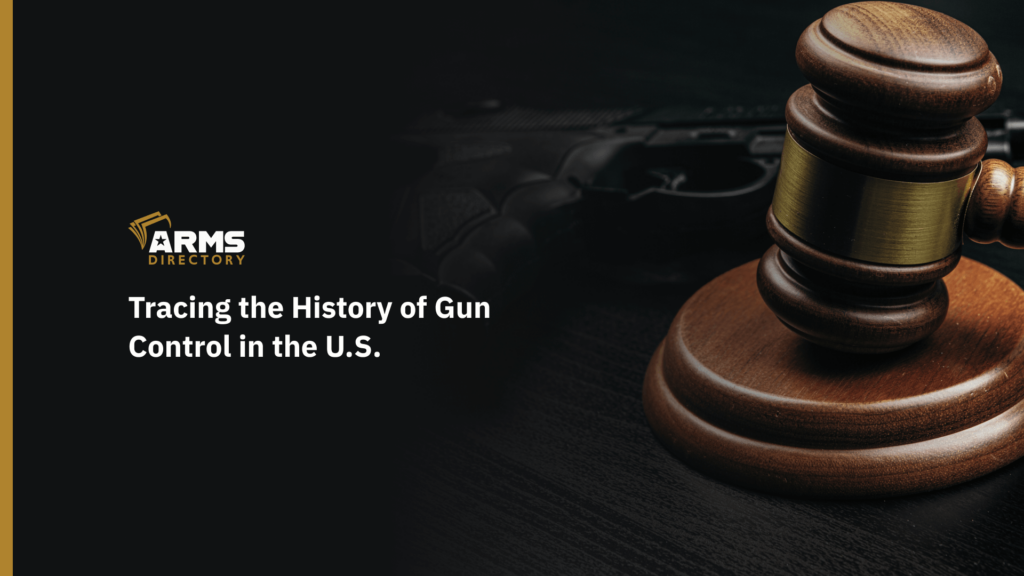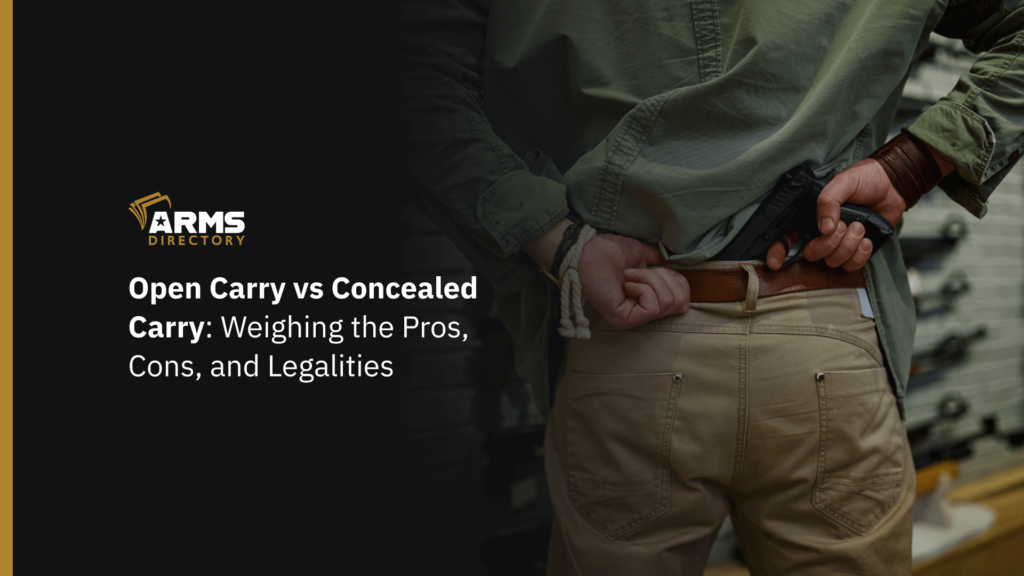
Open Carry vs Concealed Carry: Weighing the Pros, Cons, and Legalities
The subject of open carry vs concealed carry brings out many questions, and debates within American society. Sure, it is a controversial topic, and up to each individual to decide what is best for them.
However, today we will be reviewing the key issues between concealed vs open carry discussions, including the pros and cons, main differences, legal status, and more.
Related Post: Tracing the History of Gun Control in the U.S.
Open Carry vs. Concealed Carry
Let us start off by stating that the way you choose to carry is up to you and, of course, depends on the laws where you live. At the time of this writing, there are 38 open carry states in the USA, seven where a permit is required, and five where open carry is prohibited.
By this point, some of you might be wondering what these ways to carry are, and why everyone is talking about them. Here’s the deal.
What Is the Difference Between Open Carry and Concealed Carry?
In short, open carry is when the firearms you have, i.e., are legally in your possession and currently on your body, are visible to the public, while concealed carry is the opposite – the firearms are not visible, they are usually hidden somewhere on your body.
Both types of carry have their advantages and drawbacks. Let us take a closer look at them.
Pros and Cons of Concealed Carry
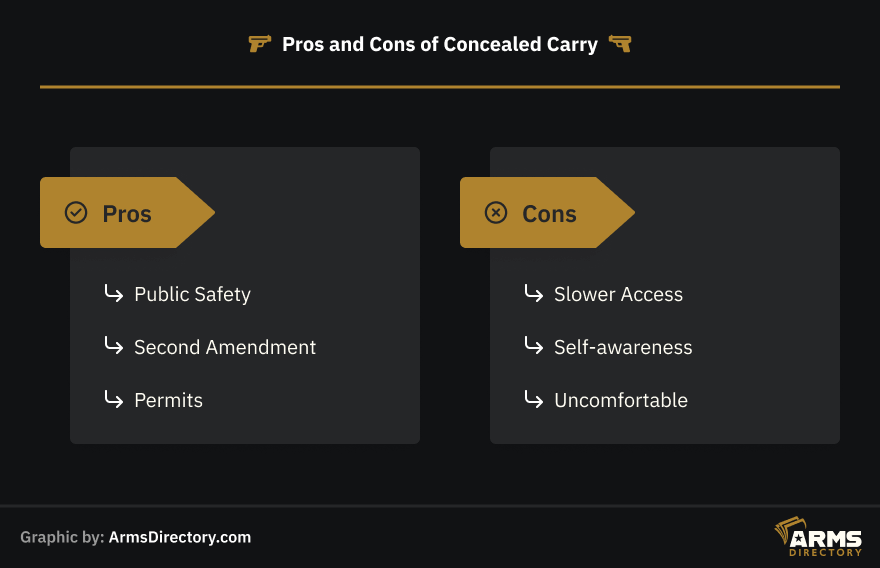
Pros:
- Public Safety. According to Larry Keane, JD, Senior Vice President for Government & Public Affairs for the National Shooting Sports Foundation, concealed carry keeps both the individual carrying the gun and the public safer. Furthermore, his opinion states that criminals may be discouraged from committing a crime, if they have to stop to consider if any person they might attempt to rob or assault is carrying a firearm.
- Second Amendment. The Second Amendment guarantees the right to carry handguns. While it does not specify, this right applies to concealed guns, the federal 7th Circuit Court of Appeals, in the case of Moore v. Madigan decided that the Second Amendment’s right to bear arms must be interpreted to encompass the right to possess a concealed firearm in public, to have it readily available for use, and to possess it for self-defense.
- Permits. Obtaining a permit for a concealed carry gun is usually easier than a license to open carry. This comes from the fact that many state laws require applicants to have additional training or knowledge in order to get an open carry permit compared to those applying for concealed carry.
Cons:
- Slower Access. Obviously, a hidden carry makes your gun slower to access. Sure, well-trained shooters can often draw and fire an accurate shot from concealment, however, for newer gun owners, the delay in drawing could be detrimental.
- Self-awareness. When carrying a concealed weapon, people tend to be more self-conscious about not accidentally breaking any laws or regulations. It is not uncommon for people to forget they are carrying a weapon, and enter schools, airports, courtrooms, and so forth, unintentionally, leading to embarrassment, and even criminal charges.
- Uncomfortable. Generally speaking, concealed carry is not the most comfortable experience. Of course, some concealed carry holsters, like the Blackhawk Serpa Level 3, or the Safariland, 7378, ALS Concealment Paddle and Belt Loop Combo Holster will ensure more comfort. That said, most people need time to adapt to carrying their firearm concealed.
Pros and Cons of Open Carry
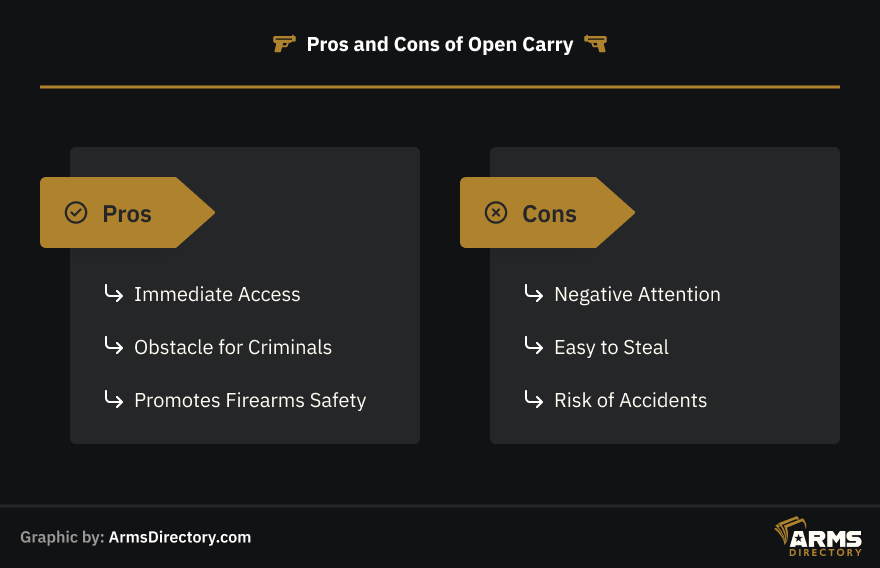
Pros:
- Immediate Access. Arguably the biggest advantage of an open carry is the instant access people have to their guns. This is perfect for self-defense, as it gives you confidence and peace of mind that you can react in time and protect yourself or your loved ones from danger.
- Obstacle for Criminals. When people notice that a person has afirearm on them, they are typically less likely to engage in any criminal activity or aggression. What is more, some state laws let people carrying firearms use them in legitimate self-defense without fear of civil or criminal repercussions.
- Promotes Firearms Safety. Open carry can effectively educate others on gun safety and responsible gun ownership by showing others how to use and store a gun properly. It is basically “a lead-by-good-example” situation.
Cons:
- Negative Attention. An open carry is instantly visible to everyone. While this might be positive, as mentioned above, it can also bring a lot of negative attention to the wearer. Some people might feel uncomfortable, or even scared, and this can cause confusion or panic in certain situations.
- Easy to Steal. People who want to cause mischief or harm, might make you an instant target, and you could be the first to get hurt.
- Risk of Accidents by The Untrained. The risk of accidental shootings is higher with an open carry. For instance, if a firearm is not adequately secured, such as in a holster or other safety device, it could easily and accidentally fall to the ground and discharge, or be discharged by an untrained individual who is simply curious about the weapon.
Related Post: Gun Registration Requirements by State [What You Need to Know] – Arms Directory
Concealed Carry vs Open Carry: Which Is Better for When?
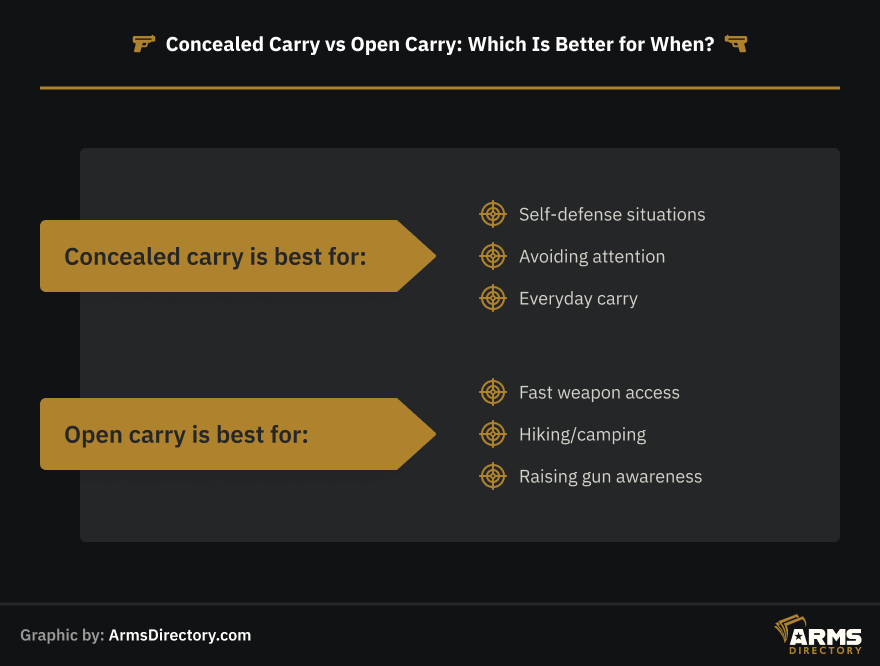
Concealed carry is best for:
- Self-defense situations
- Avoiding attention
- Everyday carry
Concealed carry permits allow gun owners to legally carry a firearm without calling attention to themselves. This can be useful in instances when discretion is desired or necessary, such as in congested urban locations or social settings where openly displaying a firearm may create discomfort or concern.
Self-defense is also another scenario where concealed carry is a good idea. An attacker will be less likely to suspect that their target is armed if the firearm is concealed, giving the carrier a tactical advantage.
It’s also worth noting that concealed carry may be the only legal option for some, or it may have fewer limitations than open carry. It is also important to be aware of local rules and regulations regarding permits and their limitations.
Ultimately, carrying a concealed firearm is often preferred for everyday situations in urban or suburban environments where discretion is valued, whereas open carry may draw unwanted attention.
Open carry is best for:
- Fast weapon access
- Hiking/camping
- Raising firearms awareness
The obvious presence of a firearm can deter potential aggressors or criminals from causing harm or committing a crime.
Openly carrying a firearm also allows for simpler and faster access to the weapon in an emergency. There is no need to fumble around in a purse or remove a gun from a concealed holster, which might save precious time in a life-threatening emergency.
Some advocates of open carry believe that it helps make firearms more acceptable to others in society while also promoting gun rights and the Second Amendment. Individuals who openly carry firearms in public may strive to raise awareness and overcome gun-related stigmas.
All in all, open carry might actually be more suitable for outdoor activities such as hiking or camping, where quick access to a firearm may be necessary, and the sight of one is less likely to cause alarm.
Summary
Open carry vs concealed carry – which do you think is better, and why?
After comparing the pros and cons of each, we’ve reached the conclusion that concealed carry is better suited for everyday use, and avoiding unwanted attention.
Open carry seems more appropriate for moments when quick access to a weapon is needed, like when one wants to enjoy hiking or camping in the great outdoors.
Let us know your opinion in the comments section, and don’t forget to visit our business directory.


![Gun Registration Requirements by State [What You Need to Know]](https://vault.armsdirectory.com/wp-content/uploads/2023/10/27073220/Gun-Registration-Requirements-by-State-What-You-Need-to-Know-1024x576.png)
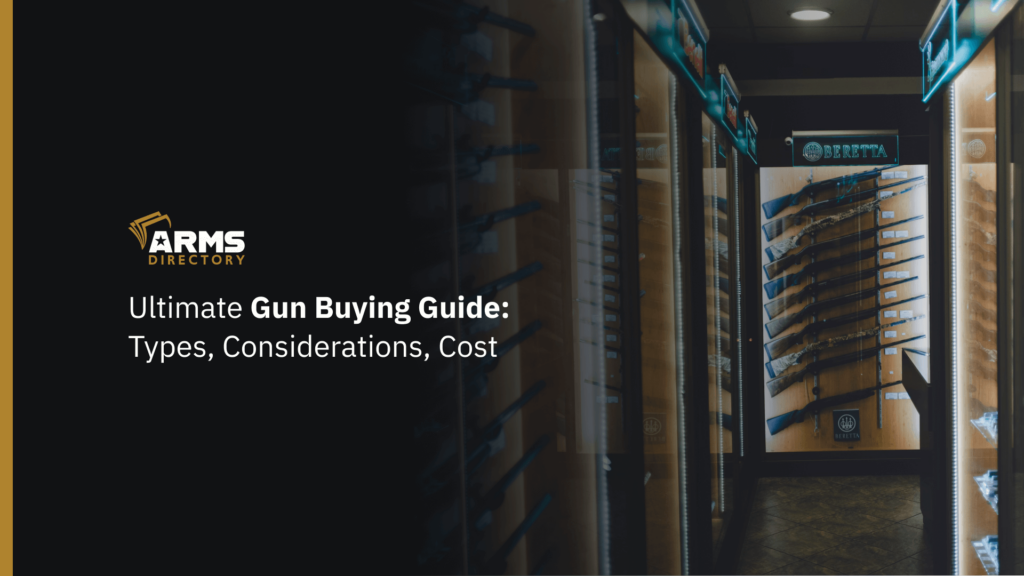
![The Right Way to Buy and Sell Firearms Online [Guide]](https://vault.armsdirectory.com/wp-content/uploads/2023/10/20050323/The-Right-Way-to-Buy-and-Sell-Firearms-Online-Guide-1-1024x576.png)
![The Ultimate Shooting Accessories for Every Weapon [A 2023 Beginners Guide]](https://vault.armsdirectory.com/wp-content/uploads/2023/08/30071223/The-Ultimate-Shooting-Accessories-for-Every-Weapon-A-2023-Beginners-Guide-1024x576.png)
